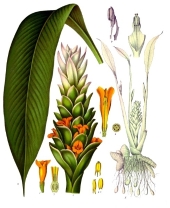
 5
5




 1
1





A piece of land is worth as much as the person farming it.
-Le Livre du Colon, 1902
 1
1




 1
1




I make a Maple Syrup instructional movie! Check it out HERE
SKIP books, get 'em while they're hot!!! Skills to Inherit Property
See me in a movie building a massive wood staircase:Low Tech Lab Movie
 6
6




Visit Redhawk's soil series: https://permies.com/wiki/redhawk-soil
How permies.com works: https://permies.com/wiki/34193/permies-works-links-threads
 5
5




I keep a blog over here: bramblewoodhill.com
 1
1




 3
3




 3
3




Aula Seiler wrote:
Last thing: can I use warm salt water (boiled to sterilise) to wash out the wound in the time after I've (hopefully) cut out the stick?
If you use well water, boil it for ten minutes, let cool for one hour, and then boil
another ten minutes before mixing with salt. Normal saline solution can be
stored at room temperature for three days in a closed container.
How do I prepare saline solution?
Wash your hands well and rinse them with warm water.
Pour 1000 mL (4 cups) of warm water
Add 2 teaspoons of table salt into your container. Measure exact amount of salt to make sure it is correct.
Mix until salt is completely dissolved.
Label your container.
 2
2




 1
1




Aula Seiler wrote:
Sarah, I did think about the vet, but I know birds are notoriously difficult to treat, so I figure if I can try it myself (someone she trusts and knows) in an environment she trusts and knows, there's a better chance of her not up and dying of a heart attack.
 9
9




It's never too late to start! I retired to homestead on the slopes of Mauna Loa, an active volcano. I relate snippets of my endeavor on my blog : www.kaufarmer.blogspot.com
 10
10




 2
2




 2
2




Visit Redhawk's soil series: https://permies.com/wiki/redhawk-soil
How permies.com works: https://permies.com/wiki/34193/permies-works-links-threads




We can take care of our small piece of this world. Leave no footprints.
 2
2




Visit Redhawk's soil series: https://permies.com/wiki/redhawk-soil
How permies.com works: https://permies.com/wiki/34193/permies-works-links-threads
 9
9





|
The barrel was packed to the top with fish. And he was shooting the fish. This tiny ad stopped him:
The new kickstarter is now live!
https://www.kickstarter.com/projects/paulwheaton/garden-cards
|






